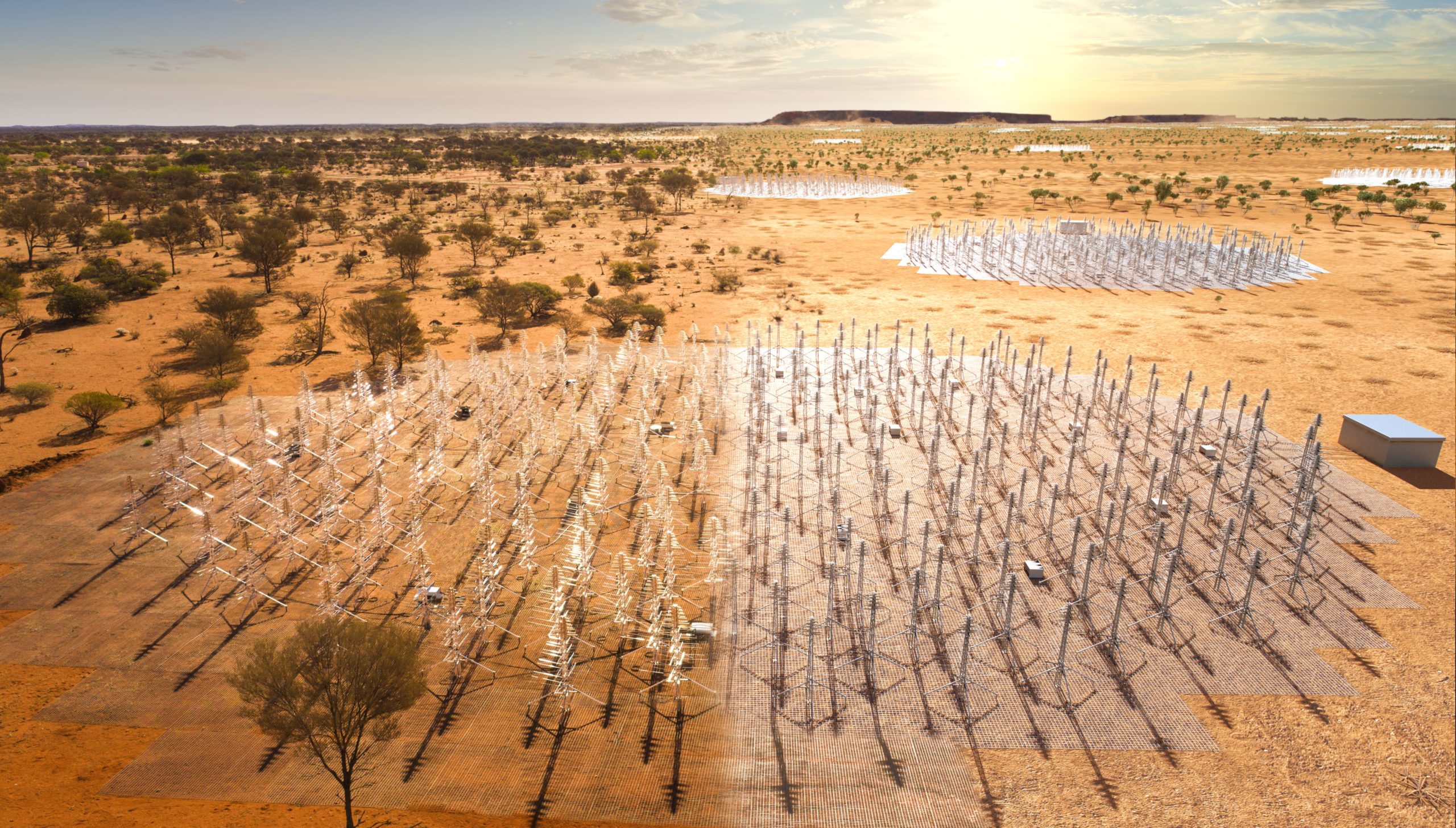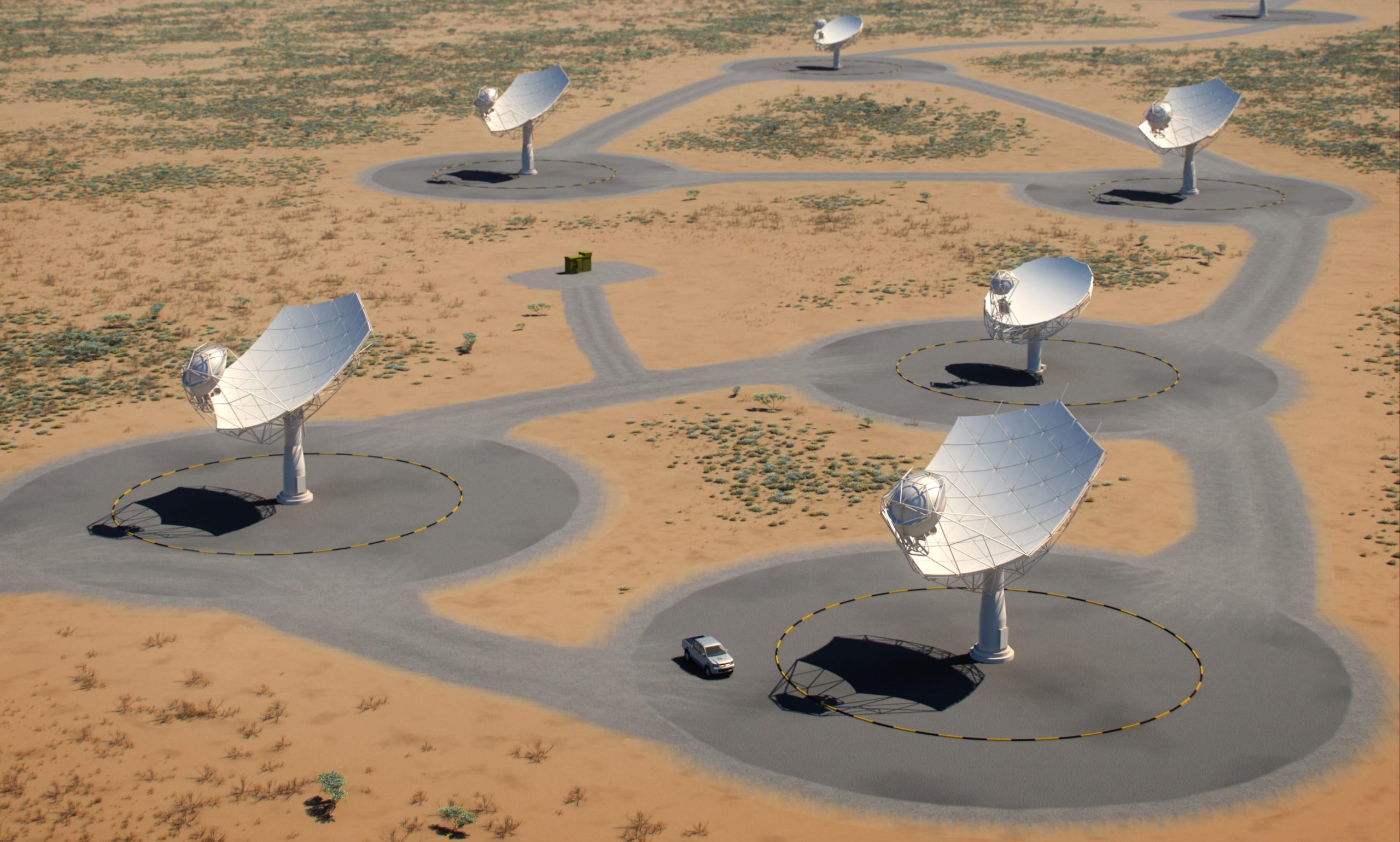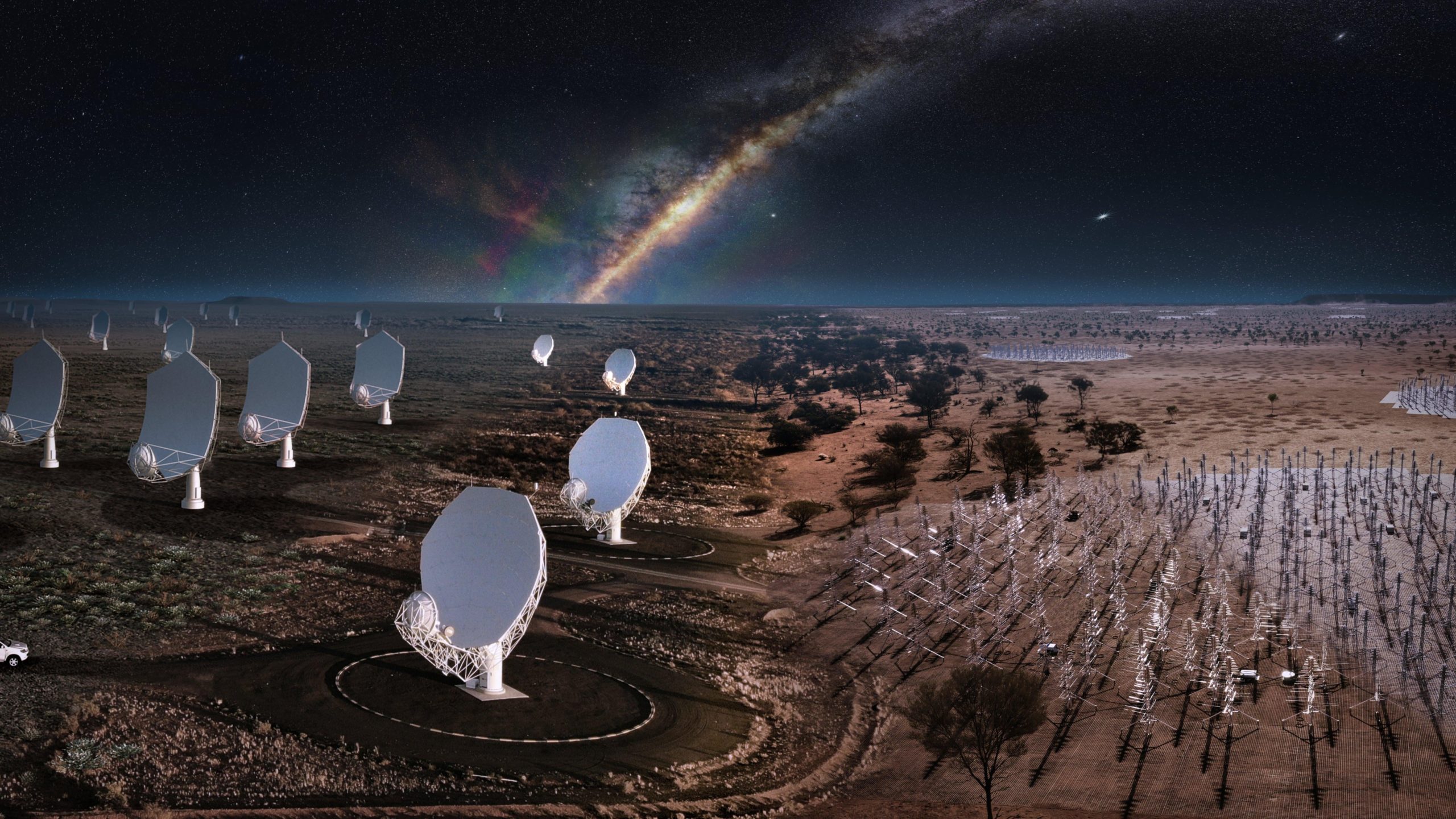The construction of the Square Kilometre Array Observatory is finally scheduled to begin next month, after the project spent seven years in the design and engineering phase. When it’s completed, the SKA Observatory will be the biggest radio telescope on Earth, with a collecting area that will cover over one kilometre.
Here’s a little more about the project, from the SKA Organisation itself:
SKA stands for Square Kilometre Array. This reflects the original desire to construct a telescope with a collecting surface of one square kilometre through an array of antennas distributed over large distances. The concept for the SKA dates back to the early 1990s, and although the original name remains, the science goals, concept and engineering behind the project have evolved over the years, resulting in the science requirements of today that call for 130,000 antennas and 200 dishes. After the first phase of construction, historically referred to as SKA1, the two arrays comprising the SKA will already have a combined collecting area of almost half a square kilometre. As antennas can be added to interferometers, a future expansion of the SKA would allow this collecting area to increase even further.
So, it’s a huge undertaking. That’s probably why construction is expected to run through July of 2029, according a report from the Financial Times, which makes sense because building the SKA Observatory is an undertaking that spans two sites, across two continents.
One site will be in South Africa, where the SKA will be made up of 197 satellite dishes that collect mid-frequency data. The other site is set for Western Australia where about 131,000 Christmas tree-shaped antennas will collect low-frequency data.

The SKA Observatory needs both of these sites to function, because recording data from both sites and putting it together is how scientists produce the images from these radio telescope installations, per the FT:
A huge variety of objects in outer space emit electromagnetic radiation with much longer wavelengths than the light visible to our eyes. The frequency and intensity of the signals depend on the chemical and physical processes taking place within each object. By combining the signals received by the tree-shaped low frequency antennas in Australia and the mid-frequency dish receivers in South Africa, SKA will cover an unprecedented range of wavelengths. Powerful data processing is then able to convert the signals into images.
You can also guess that the project will cost a ton of cash, nearly $US2.4 ($3) billion, but it looks like space (kinda like sports) is one of the things that can still bring together many different countries and their governments, as the FT details:
The giant €2bn Square Kilometre Array observatory, an international partnership between South Africa, Australia, the UK and four other countries, will be at least 10 times more powerful than existing telescopes…
The seven founding nations of the SKA observatory on Tuesday said the technical and scientific case for the project and the funding were secure enough for construction to begin…
South Africa, Australia and the UK, where the observatory’s headquarters are based, at Jodrell Bank, near Manchester, will be the biggest financial contributors to the construction costs…
The other founding members are China, Italy, the Netherlands and Portugal.
But other countries are also going to benefit from the installations, and the array is projected to be in use for fifty years.

The SKA Observatory will also help astronomers potentially detect other civilizations that are emitting radio waves for the first time ever, according to the report:
For the first time, astronomers will be able “to detect radio emissions from planets associated with nearby stars that are comparable to those generated by human activity on Earth, opening the possibility of detecting technologically active civilisations elsewhere in our galaxy”, the SKA’s designers said.
“The search for extraterrestrial intelligence [known in science circles as Seti] is not one of our primary scientific missions but if we do find it, then ‘wow’,” said Diamond. “We will be the best Seti machine on the planet.”
So, no, the SKA Observatory is not technically meant for finding intelligent life, but it sure as hell won’t hurt the search, either.

